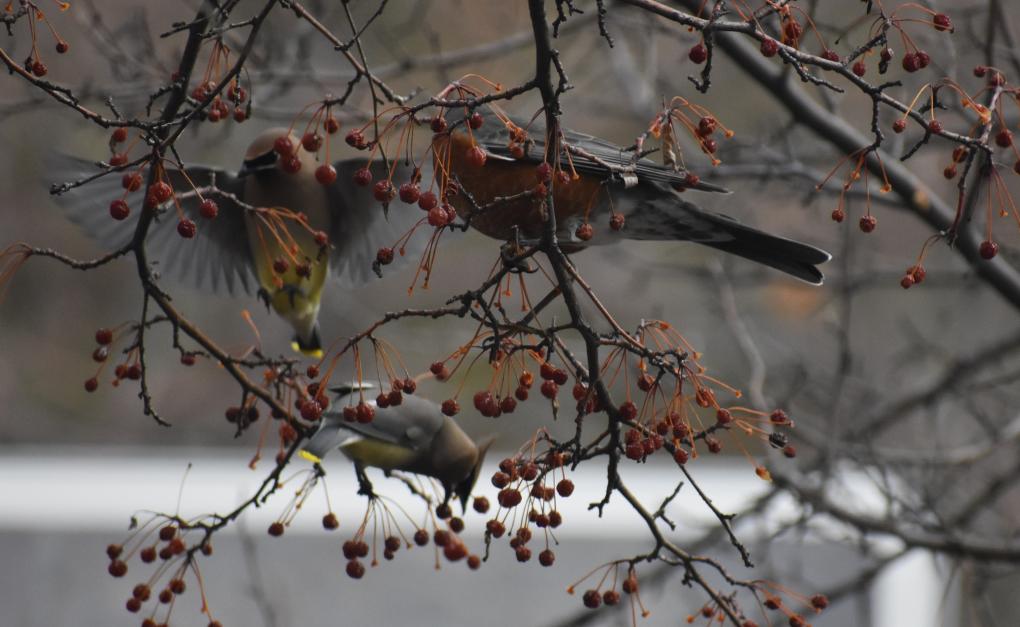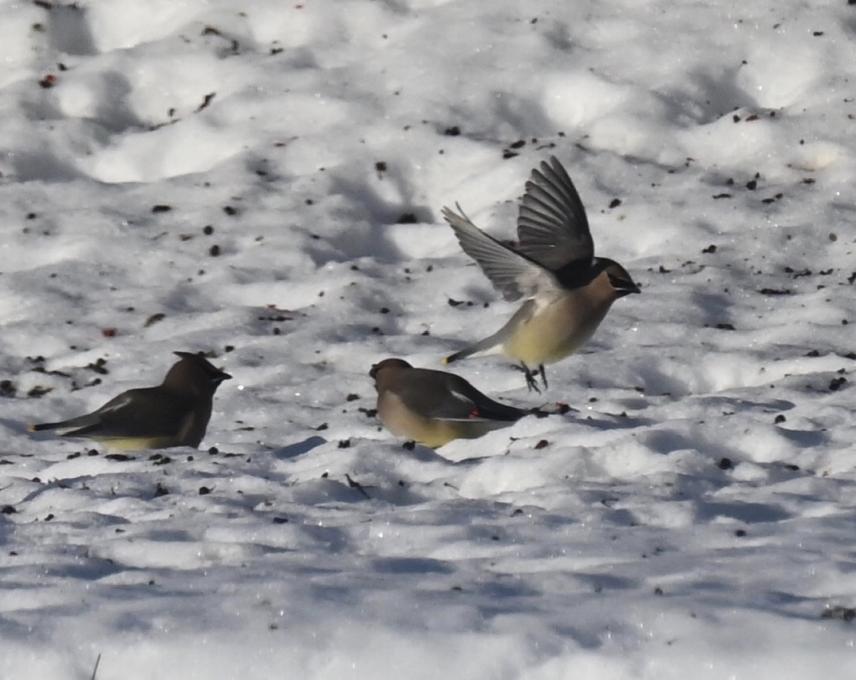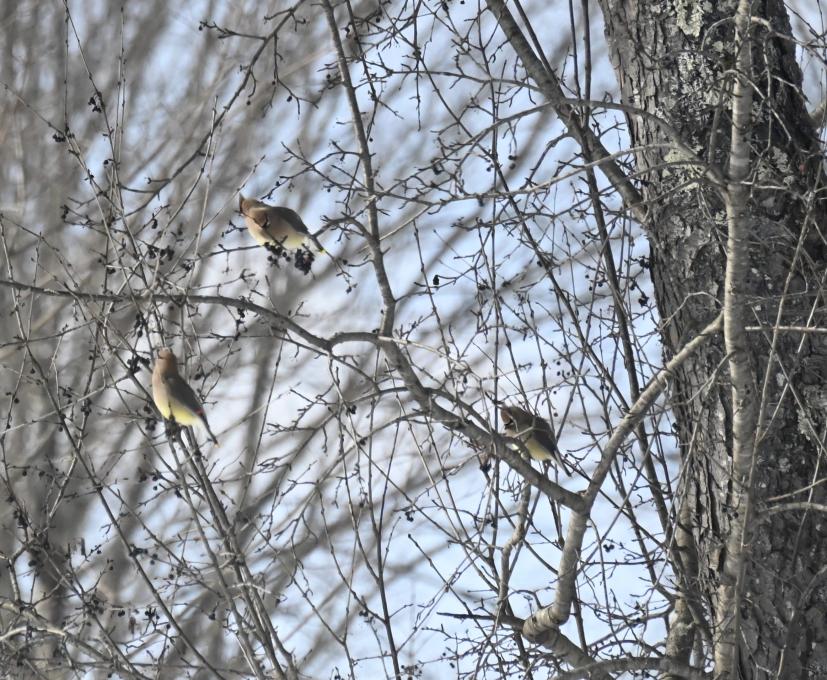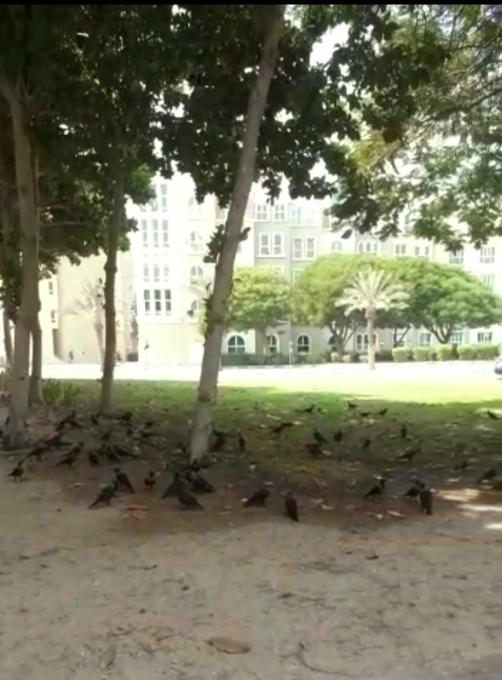The Cornell Lab Bird Academy › Discussion Groups › Anything but Common: The Hidden Life of the American Crow › Life in a Flock
-
Bird AcademyBird Academy
- Have you noticed any foraging flocks in your area? What time of year did you see them? Describe the habitat. Could you estimate the size?
- Have you seen other birds form large flocks? Do you know what they were?
You must be enrolled in the course to reply to this topic. -
We have crows in a backyard park. They seem to be here all year round but they appear in family groupings. The largest flocks I know of are in Bothell where they roost in the winter.
-
We see them family groups most of the year, but flocks most commonly late fall and winter. The group up and fly into Glens Falls to take advantage of the urban heat bubble and range out onto agricultural fields in Washington County for food. Of course Canada geese, in southern Washington County we see snow geese, Starlings, pigeons, and this year we have a flock of about 60 red wing black birds stop at the feeders in front of the office.
-
A few days ago I watched a group of about 10 crows playing around in the woods behind my house. Their kept going between my leaf litter and the trees. I have learned over the years to watch where they frequent in my yard, it can tell me where a hen was laying "hidden" eggs, and unfortunatly where a rabbit nest had been. They also love to forage around in my compost pile.
-
A few years back I was in Augusta Maine by the mall about 5:00 or 6:00 pm it was an amazing sight.and saw a very large flock of crows flying in. There were hundreds of the. It was winter time.
-
1. No foraging flocks in the city that I’ve noticed. Only family groups. 2. Have in the past seen large groups of waxwings fly through my end of the city, can’t recall time of year. More recently (fall and winter) there have been small flocks of yellow finches stopping at my feeders.
-
I live in a rural area with large farms with fields that are gleaned aggressively by flocks of crows in the fall. The largest flock I saw was in the 20 to 30 range. There is a main family group in my neighborhood that makes several rounds each day. The family. Visits my yard everyday in the late morning to early afternoon. Three to five forage for bits of seed, peanuts and suet that I place for song birds. If I walk in my neighborhood I am followed by at least one crow who announces my presence. Sometimes one or two will follow me around to keep tabs on me.
-
1.Recently, I have seen a large flock of crows that roosted in the fir trees . It was near the sidewalk and near people's houses. There were about 200 individuals. 2. I have seen a big flock of brewer's blackbirds around the parking lot near the mall.
-
Recently, I travelled to coastal Washington and BC for a birding trip, and I was amazed at the sheer numbers of birds flocking in certain bays, presumably good feeding spots. I saw hundreds of dunlin, Western sandpipers, and thousands of American wigeon - I would guess 3000-5000 in places.
-
I have observed crows foraging in several locations around the area that I eBird. The golf course is one favorite place where they walk about finding food in the rough margins of the fairways. I have also noticed crows on the dam holding back the lake. They forage on the top in the grass and sometimes among the rocks of the rip-rap. They also seem to spend time in the fenced-in area to the water treatment plant behind the dam. What they are finding for food is a mystery to me. I also see large flocks of Canada geese on the lake at various times of the year. Ducks, dabbling as well as diving, migrate through two times a year and use the lake for a day or two possibly as a resting stop.
-
A little note on crows and their peskiness. Recently I completed a season of work on a farm that grows garlic. The "seed" garlic cloves are planted in late October (here in South-Central Ontario) to produce the next year's crop. We had some trouble with crows (or possibly ravens also, there is a family group that nested on one of the farm's old silos) coming along and plucking out the cloves only to dump them back on the ground. The question is: why? They didn't eat them, and there doesn't seem to be anything to be gained from pulling them up. Plenty of earth was already being turned over by the tractor plow preparing rows for planting so searching for something where the garlic was planted doesn't seem plausible.
-
The biggest flocks I've seen are Pigeons, Grackles, and Eurasian Collared/Mourning Doves and these 3 groups semi-coexist to my surprise.
-
Growing up in Maryland we had lots of crows and ravens. Out here in South Dakota I mainly see grackles. I will be looking for them as I go birding. Most interesting and intelligent birds. I am enjoying the course!
-
Growing up I used to see flocks of Canada geese flying overhead in the famous V formation, calling out as they did so. They would stop at my local lake and children would often get chased by them, though the geese would also be harassed by people too. These were probably groups of 7 to 10 birds.
-
1. I have seen crows flocking in my area, but the reason for the flock has mainly been for roosting. I think the times I have seen crows together in a flock for foraging are usually family groups, as there are only a few members and they are usually in areas where I suspect the crows to be nesting. 2. When visiting Texas once, I got to experience seeing Grackles form their large winter flocks.
-
I've had large flocks of waxwings come in during fall migration. They land on the trees and strip off all the fruits then take off. Starlings have done it too.
-
 I have observed sizable groups of robins and waxwings converging onto trees or bushes with berries during the winter.
I have observed sizable groups of robins and waxwings converging onto trees or bushes with berries during the winter. -
In the wintertime, it is chocked full of crows on the golf course not far from my home. they like standing near the sandtraps, eating. it's interesting to note that they're not the same crows every time, which is what I assumed. Canada Geese also like to meet up there, but never at the same time. the group of crows is probably 50 or 60 birds.
-
I have seen a large flock which comes day after day to the same venue winter and summer. I have a couple of them who visit my planet boxes daily at roughly the same time. Ther e are no changes to the boxes and they make the same rounds daily. I have also watched one individual observe a bluejay walk about my roof looking for just the right place to hide his goodie. He finally found the right spot and cached his mor sel and flew off. Within a minute a crow appeared and followed the exact route of the bluejay, found the tasty morsel, snagged it, and then flew off with his prize. I was fascinated and most impressed and decid Ed to learn more about crows. They certainly are worth watching!
-
1. Yes on two occasions, I have seen large foraging flocks. The first time I noticed hundreds of birds in smaller groups flying over downtown Akron, Oh. All we’re headed in the same direction. I didn’t see their final destination. The second time all these crows were meeting in a large open field near Goodyear aerospace in Akron Ohio. Hundreds of them. Both times it was during the fall and winter. Made me wonder if they don’t get together every night somewhere to spend the night. They all seem to start flying around 4:30 in the afternoon. 2. I have never seen other large groups of birds like this, I’ve only seen large groups of migrating birds.
-
I have seen a large foraging flock of crows in our town, perhaps thousands of birds. They are pretty regular. Have also found a winter roost and visited it, in Lawrence Mass. - very urban. I suppose in the long ago past this area was on the forested edge of the Merrimack River, and the crows keep coming despite the nearby train tracks and businesses and hospital nearby. Very interesting to watch
-
1. I've seen a flock of Cedar waxwings, in Vermont, in the winter, foraging in trees that still had remaining old fruit (Serviceberry, maybe) A flock numbering maybe 30+ individuals. They didn't stay long, just a brief flurry of activity, and didn't return, that I saw.

 Also in Vermont, flocks of Wild turkeys foraging in fields, especially in late summer after the fields have been mown. I have seen up to 30+ individuals. Flocks seem to be females and juveniles. In winter males seem to form their own groups of 8 to 10 individuals. They forage for dropped seed under birdfeeders.
2. Aside from crows, the largest flocks I see are starlings, which are not my favorite, but their murmurations can be mesmerizing. Also Canada geese (flocks seem largest when settled on open water in a semi-frozen lake, while migrating in early winter). Mourning doves (I've seen up to 20 or so, hanging out around bird feeders.)
Also in Vermont, flocks of Wild turkeys foraging in fields, especially in late summer after the fields have been mown. I have seen up to 30+ individuals. Flocks seem to be females and juveniles. In winter males seem to form their own groups of 8 to 10 individuals. They forage for dropped seed under birdfeeders.
2. Aside from crows, the largest flocks I see are starlings, which are not my favorite, but their murmurations can be mesmerizing. Also Canada geese (flocks seem largest when settled on open water in a semi-frozen lake, while migrating in early winter). Mourning doves (I've seen up to 20 or so, hanging out around bird feeders.) -
I live on the second floor in a building close in to downtown Portland. Crows congregate in my neighborhood on trees, phone lines, and roof lines and then take off in a flock and fly downtown for their nightly gathering. I enjoy watching them gather and then take off. Sometimes the sky is swarming with crows heading for their nightly gossip sessions. I've also been downtown when they're arriving. It's quite dizzying watching them circle and find places to land. Fascinating!
-
In my suburban area of the UAE, I observe the grey-necked crow, also known as the house crow or Indian crow, forage in small groups around dumpsters. These groups might be three to ten crows in size. Last week, I saw a large group of about twenty standing at the ready near some laborers who were lunching. ... In the summer, when it's particularly hot, very large groups of these crows congregate on the ground under trees, where the earth is cool because of the shade and sprinkler systems. I assume the large numbers serve the purpose of safety, as there is still plenty of human foot traffic in the area. The photo shows a smaller crowd, but I believe their purpose was to keep safe while keeping cool.

-
1. We live in rural Wisconsin and I see large flocks of crows in the cornfields in the winter. 2. Just recently (December) saw a large flock of Snow Buntings in the middle of the road.
Read More:
 I have observed sizable groups of robins and waxwings converging onto trees or bushes with berries during the winter.
I have observed sizable groups of robins and waxwings converging onto trees or bushes with berries during the winter. 
 Also in Vermont, flocks of Wild turkeys foraging in fields, especially in late summer after the fields have been mown. I have seen up to 30+ individuals. Flocks seem to be females and juveniles. In winter males seem to form their own groups of 8 to 10 individuals. They forage for dropped seed under birdfeeders.
2. Aside from crows, the largest flocks I see are starlings, which are not my favorite, but their murmurations can be mesmerizing. Also Canada geese (flocks seem largest when settled on open water in a semi-frozen lake, while migrating in early winter). Mourning doves (I've seen up to 20 or so, hanging out around bird feeders.)
Also in Vermont, flocks of Wild turkeys foraging in fields, especially in late summer after the fields have been mown. I have seen up to 30+ individuals. Flocks seem to be females and juveniles. In winter males seem to form their own groups of 8 to 10 individuals. They forage for dropped seed under birdfeeders.
2. Aside from crows, the largest flocks I see are starlings, which are not my favorite, but their murmurations can be mesmerizing. Also Canada geese (flocks seem largest when settled on open water in a semi-frozen lake, while migrating in early winter). Mourning doves (I've seen up to 20 or so, hanging out around bird feeders.) 